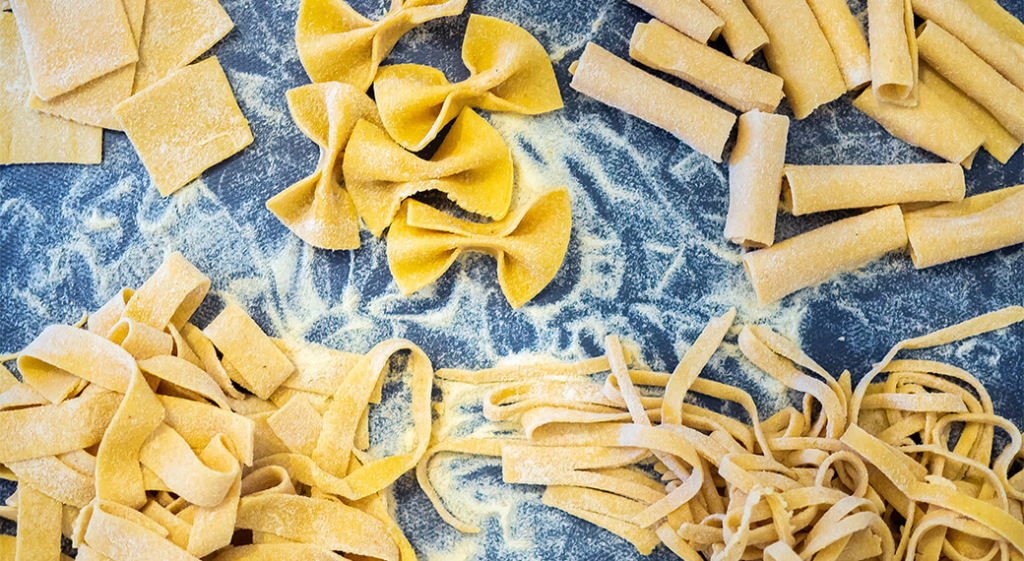Happy National Pasta Day! We invite you to test your knowledge of pasta varieties that Italy has contributed to the global gastronomic scene. Through this quiz you will learn about their origins, and uncover interesting facts about their names and shapes. Buon appetito!
Results
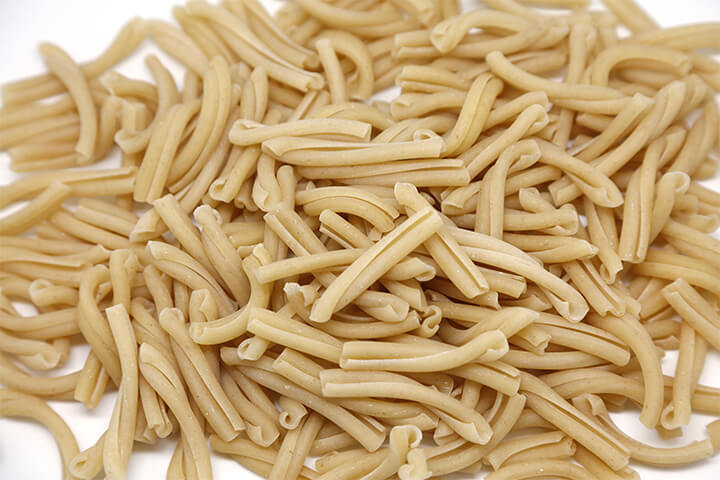
#1. Which Italian pasta’s name translates to "priest stranglers" or "choke the priest?"
Our first Italian pasta, Strozzapreti, originated in the regions of Emilia-Romagna and Tuscany. The name itself carries an intriguing historical and somewhat macabre backstory. In Italian, its name translates to “priest stranglers” or “choke the priest.” This name is associated with a legend suggesting these pasta shapes resemble the collars that priests wore, and it humorously implies that eating them could metaphorically “choke” a priest. Another interpretation is that the pasta was named as such because of the belief that gluttonous priests could choke on it due to its chewy and dense texture.
Physically, these are hand-rolled pasta shapes that are roughly cylindrical and resemble twisted or rolled pieces of dough. They are typically made from a simple mixture of flour and water, rolled into thin ropes, and then twisted or rolled between the palms to create their distinctive shape. This artisanal method gives them a rustic appearance and a slightly irregular texture, perfect for capturing sauces.
It is sometimes confused with another pasta shape called “casarecce” due to their similar appearance. However, casarecce have a slight curve and are shorter.
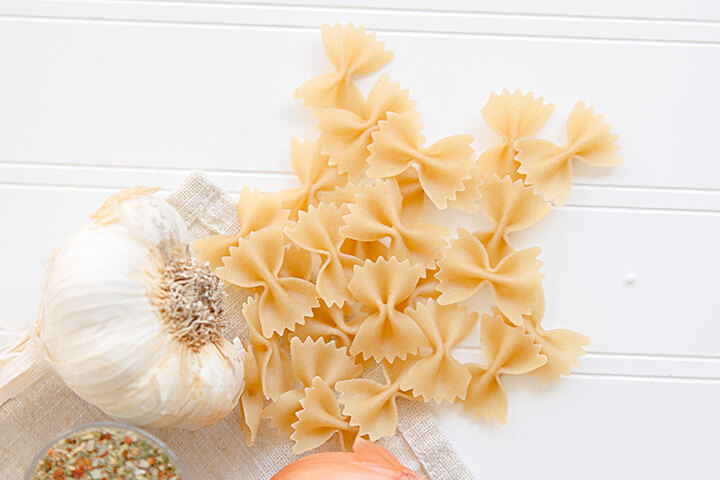
#2. Which Italian pasta resembles a bow tie?
Farfalle, also known as bow-tie pasta, this is a charming and distinctive pasta variety that originated from Italy. Its name means “butterflies” in Italian, and this pasta’s unique shape indeed resembles a butterfly or bow-tie, with two triangular ends meeting in the center.
The process of making this pasta involves cutting sheets of pasta dough into small rectangles and then pinching them in the middle to create the distinctive bow-tie shape. Its shape isn’t just for aesthetics; it’s also designed to hold sauces effectively. The nooks and crannies created by the bow-tie shape catch and cradle sauces, making it a fantastic choice for both creamy and chunky pasta sauces.
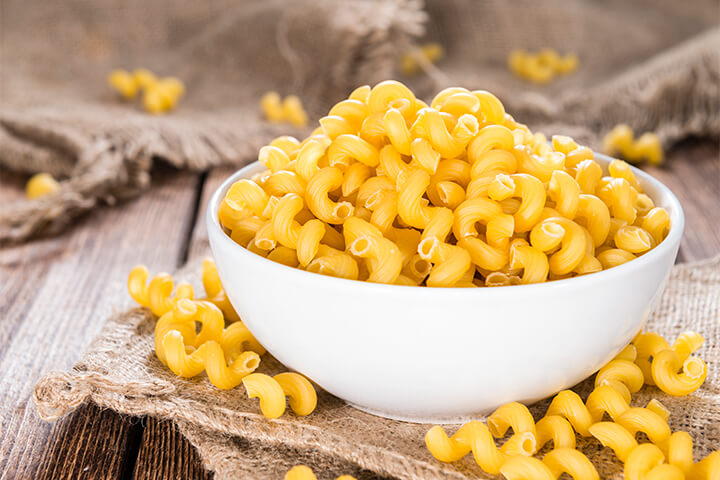
#3. Which type of pasta resembles a cork screw or the coils of a spring?
Cavatappi is a distinctive pasta is known for its tubular, spiral structure, which resembles a corkscrew or the coils of a spring. The name itself translates from Italian as “hollow cork”, reflecting its unique form.
Originating from Southern Italy, it has a rich history dating back to ancient times. It is believed to have been a popular pasta shape in regions like Sicily and Calabria. The hollow, helical design makes it an excellent choice for holding onto thick sauces, making it a favorite in Italian pasta dishes. It’s also used in pasta salads, macaroni and cheese, and casseroles, as its unique form can capture and hold various ingredients and flavors.
Cavatappi’s versatility and playful appearance have also made it a favorite pasta shape for children and the young at heart. Its delightful twisty design adds an element of fun to any meal.
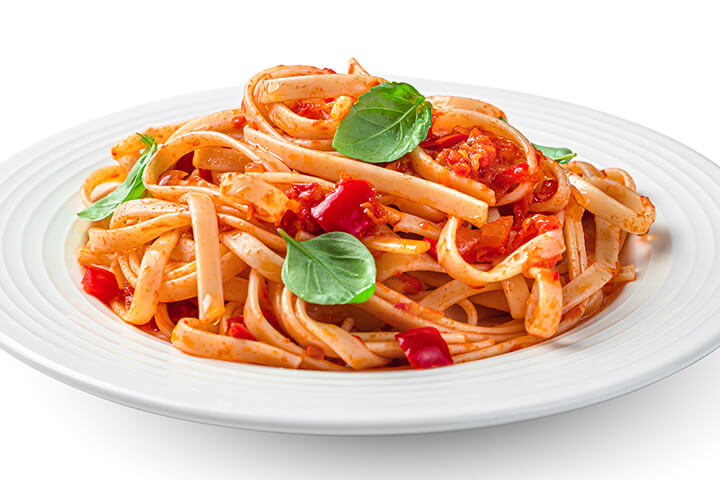
#4. Which pasta closely resembles fettuccine and spaghetti?
Linguine originated in the Liguria region of Italy. It is a long, narrow pasta variety, similar in shape to fettuccine and spaghetti, but slightly flatter. It is about 4 millimeters wide, which is slightly wider than spaghetti but not as wide as fettuccine. It is typically made from durum wheat semolina and water, resulting in a smooth, flat surface.
The name of these long pasta strands are derived from the Italian word for “tongue,” due to its flattened, tongue-like shape. Its flat surface and slender shape allow it to hold sauces effectively.
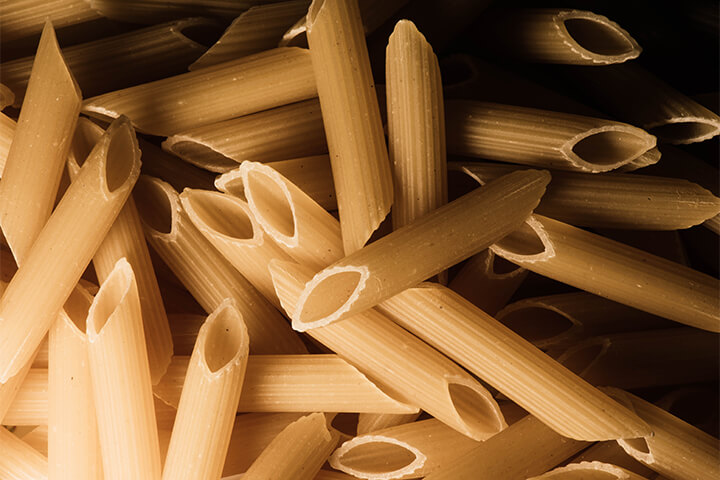
#5. Which pasta's name is derived from the Italian word for "pen”?
This popular pasta, penne, features a unique tubular shape that varies in shape and size. Some varieties are smooth, while others are rigid. Its name is derived from the Italian word for “pen.” This name is quite fitting as it resembles the shape of a quill or fountain pen nib, with a hollow center and diagonally cut ends.
Having originated in the Campania region, particularly in the city of Genoa, this pasta variety has been a staple in Italian cuisine for centuries. It’s made from durum wheat semolina and water, giving it a firm texture and the ability to hold sauces effectively.
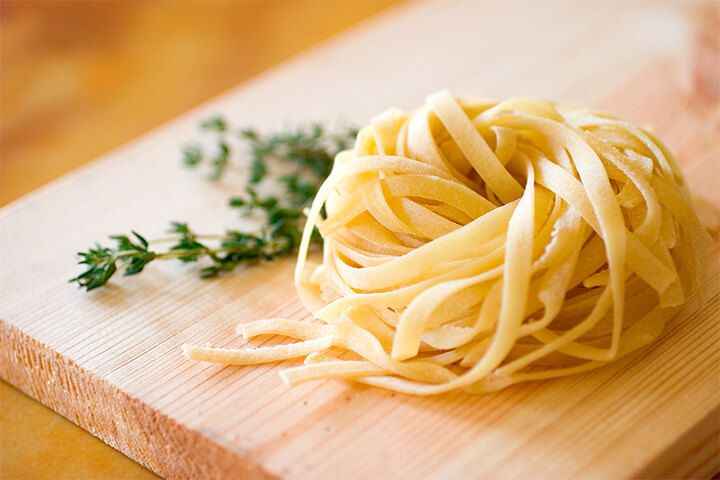
#6. According to legend, which pasta was created in honor of the wedding of Lucrezia Borgia to Giovanni Sforza in 1487?
Tagliatelle is a long, flat, ribbon-shaped egg pasta originating in Italy’s Marche and Emilia-Romagna regions. It’s available in both fresh and dried forms, and is traditionally served with meat sauce, such as the classic Bolognese.
Its name means “to cut” in Italian because it is traditionally made by rolling the dough into flat sheets and then cutting it into ribbons using a kitchen knife. It’s also available in straight ribbons or coiled into a nest.
Legend has it that this pasta was created in 1487 by a chef named Zaffarini in honor of the wedding of Lucrezia Borgia to Giovanni Sforza. Zaffarini is said to have cut the pasta into long ribbons to resemble the bride’s blonde hair.
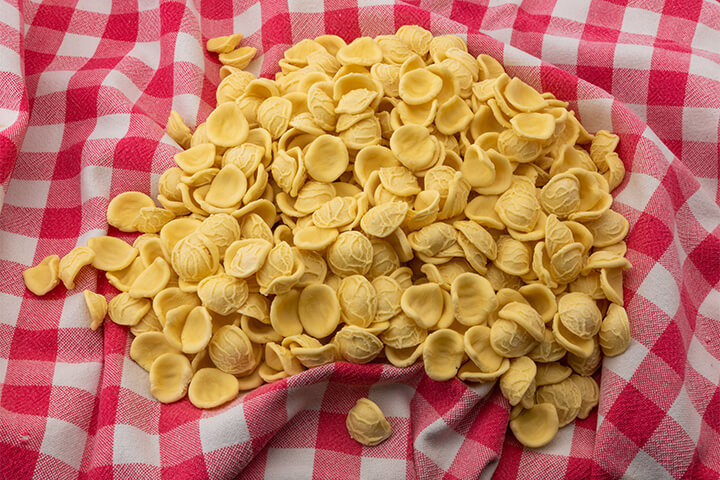
#7. Which type of pasta is all ears?
Orecchiette is all ears. It is a unique and distinctive variety of pasta that hails from the southern regions of Italy, particularly Puglia. Its name translates to “little ears” in Italian, because this pasta’s shape resembles small, shallow bowls or, indeed, tiny ears.
Traditionally, Italians would handcraft it by rolling small pieces of pasta dough into round discs, then using their thumbs to create a slight indentation in the center. This method gave the pasta its characteristic concave shape, which is perfect for trapping sauce.
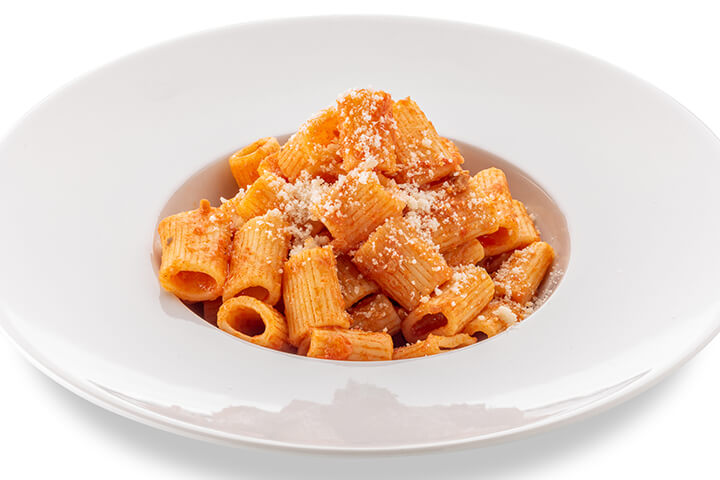
#8. Which pasta means "half sleeves" in English?
Mezze Maniche translates to “half sleeves” in English. It is characterized by its short, tubular shape with straight-cut ends. It has a versatile shape and the ability to hold thick and hearty sauces.
These short, stout pasta tubes resemble miniature sleeves or small pipes. They are typically about 2 inches in length and have a relatively wide diameter, making them perfect for catching and holding thick sauces. The straight-cut ends give them a clean and uniform appearance.
This tubular variety has gained popularity among food enthusiasts for its ability to hold stuffing. It can be filled with various ingredients, such as ricotta cheese and spinach, to create delicious stuffed pasta dishes. It is also particularly suitable for pasta alla carbonara.
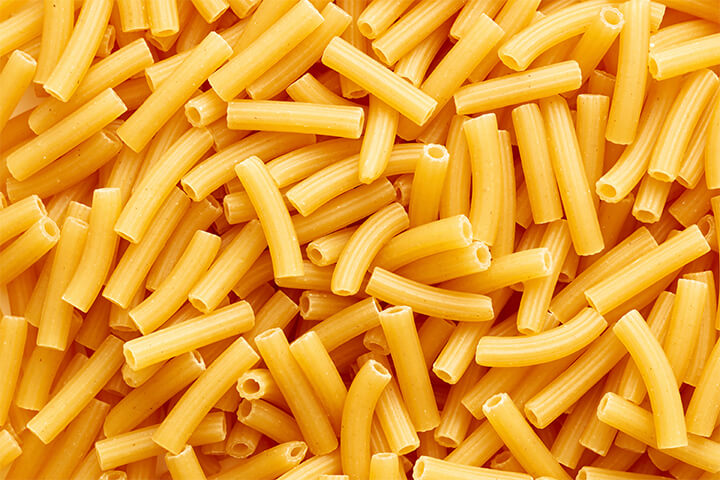
#9. Which pasta was traditionally served at Italian weddings to symbolize the joining of two families?
The first word of Ziti Rigati translates from Italian as “bride” or “young girl.” Its name is thought to be associated with its role in traditional Italian weddings, where it was often served to symbolize the joining of two families. The second word translates from Italian as “ridges”.
It’s appearance is characterized by its long, cylindrical shape and ridges or grooves running along its surface. These ridges not only add an appealing texture to the pasta but also help it hold onto sauces and flavors. It’s commonly used in baked pasta dishes like Baked Ziti, where it’s combined with tomato sauce, cheese, and sometimes ground meat or vegetables, and then baked until it forms a delicious, comforting casserole.
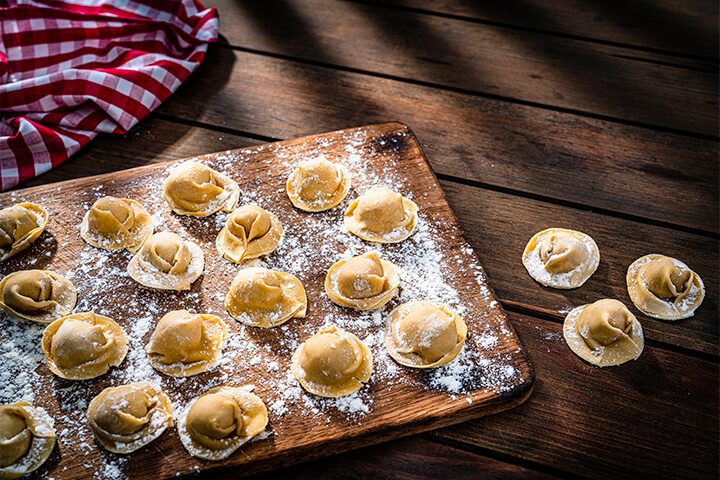
#10. Which type of pasta resembles a tiny hat?
Our last pasta, Cappelletti, hails from the Emilia-Romagna region of Italy. Its name translates from Italian as “hat” because the pasta’s shape resembles a tiny hat or bonnet. This name is a nod to the pasta’s appearance, with its round or square wrappers and a filling typically made from a mixture of meats, such as ground pork or beef, along with cheese, herbs, and sometimes a touch of nutmeg.
It is most associated with special occasions and holiday feasts in Italy, particularly Christmas. Traditionally, making it is a labor-intensive process that involves rolling out thin sheets of pasta dough, cutting them into small squares or circles, filling each piece with the savory mixture, and then folding them into the characteristic hat shape. These pasta parcels are then cooked and served in a flavorful broth, often garnished with grated Parmesan cheese. Although it appears similar to tortellini, it is larger in size.

